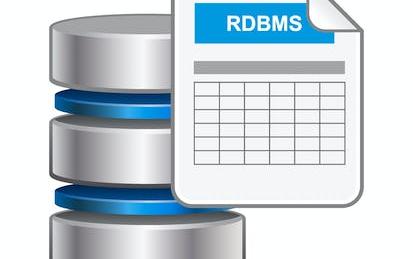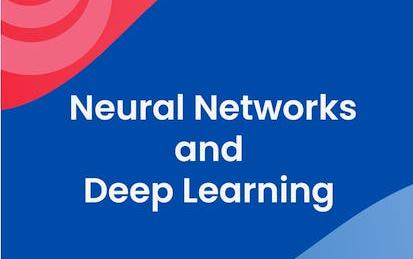

Our Courses

Getting started with TensorFlow 2
Welcome to this course on Getting started with TensorFlow 2! In this course you will learn a complete end-to-end workflow for developing deep learning models with Tensorflow, from building, training, evaluating and predicting with models using the Sequential API, validating your models and including regularisation, implementing callbacks, and saving and loading models. You will put concepts that you learn about into practice straight away in practical, hands-on coding tutorials, which you will be guided through by a graduate teaching assistant.
-
Course by

-
 Self Paced
Self Paced
-
 26 hours
26 hours
-
 English
English

Introduction to Relational Databases (RDBMS)
Are you ready to dive into the world of data engineering? In this beginner level course, you will gain a solid understanding of how data is stored, processed, and accessed in relational databases (RDBMSes). You will work with different types of databases that are appropriate for various data processing requirements. You will begin this course by being introduced to relational database concepts, as well as several industry standard relational databases, including IBM DB2, MySQL, and PostgreSQL.
-
Course by

-
 Self Paced
Self Paced
-
 19 hours
19 hours
-
 English
English

Custom Models, Layers, and Loss Functions with TensorFlow
In this course, you will: • Compare Functional and Sequential APIs, discover new models you can build with the Functional API, and build a model that produces multiple outputs including a Siamese network. • Build custom loss functions (including the contrastive loss function used in a Siamese network) in order to measure how well a model is doing and help your neural network learn from training data.
-
Course by

-
 Self Paced
Self Paced
-
 31 hours
31 hours
-
 English
English

Introduction to TensorFlow for Artificial Intelligence, Machine Learning, and Deep Learning
If you are a software developer who wants to build scalable AI-powered algorithms, you need to understand how to use the tools to build them. This course is part of the DeepLearning.AI TensorFlow Developer Specialization and will teach you best practices for using TensorFlow, a popular open-source framework for machine learning. The Machine Learning course and Deep Learning Specialization from Andrew Ng teach the most important and foundational principles of Machine Learning and Deep Learning.
-
Course by

-
 Self Paced
Self Paced
-
 18 hours
18 hours
-
 English
English

Data Visualization and Dashboards with Excel and Cognos
Learn how to create data visualizations and dashboards using spreadsheets and analytics tools. This course covers some of the first steps for telling a compelling story with your data using various types of charts and graphs. You'll learn the basics of visualizing data with Excel and IBM Cognos Analytics without having to write any code. You'll start by creating simple charts in Excel such as line, pie and bar charts. You will then create more advanced visualizations with Treemaps, Scatter Charts, Histograms, Filled Map Charts, and Sparklines.
-
Course by

-
 Self Paced
Self Paced
-
 24 hours
24 hours
-
 English
English

Writing and Editing: Drafting
This third course in the “Good with Words: Writing and Editing” series will give you a number of strategies to help with what is often the most intimidating, even paralyzing part of the writing process: getting started. You’ll learn about the “planning fallacy” and “temptation bundling.” You’ll get a chance to experiment with “freewriting” and “writing before you are ready.” And you’ll continue to benefit, through our ongoing “Good Sentences” and “Takeaways” segments, from the models and advice of a diverse set of writers.
-
Course by

-
 Self Paced
Self Paced
-
 14 hours
14 hours
-
 English
English
The Brain and Space
This course is about how the brain creates our sense of spatial location from a variety of sensory and motor sources, and how this spatial sense in turn shapes our cognitive abilities. Knowing where things are is effortless. But “under the hood,” your brain must figure out even the simplest of details about the world around you and your position in it. Recognizing your mother, finding your phone, going to the grocery store, playing the banjo – these require careful sleuthing and coordination across different sensory and motor domains.
-
Course by

-
 Self Paced
Self Paced
-
 10 hours
10 hours
-
 English
English

Advertising with Meta
This course will establish you as an expert in Meta Ads Manager. Learn how to structure campaigns in Ads Manager by selecting ad objectives, target audience, budget, and placement that fit your unique goals. Learn to create and manage ads across Facebook and Instagram and evaluate and optimize the results of your Ads Manager campaigns. You will end the course by creating an actual ad campaign in Ads Manager to expand not only your knowledge, but your social media marketing portfolio.
-
Course by

-
 Self Paced
Self Paced
-
 23 hours
23 hours
-
 English
English

Managing Data Analysis
This one-week course describes the process of analyzing data and how to manage that process. We describe the iterative nature of data analysis and the role of stating a sharp question, exploratory data analysis, inference, formal statistical modeling, interpretation, and communication. In addition, we will describe how to direct analytic activities within a team and to drive the data analysis process towards coherent and useful results. This is a focused course designed to rapidly get you up to speed on the process of data analysis and how it can be managed.
-
Course by

-
 Self Paced
Self Paced
-
 9 hours
9 hours
-
 English
English

Sustainable Fashion
Sometimes when we say we work with sustainable fashion people look at us like... "Mmmm, is it really possible for something like fashion to be sustainable?" And let's face it, people are right being suspicious. If anything the fashion industry has become increasingly unsustainable over the last decades, using more and more natural resources and creating more and more waste. In this course, we provide an overview of business model theory and discuss business models as essential tools in the transformation towards more sustainable businesses.
-
Course by

-
 Self Paced
Self Paced
-
 5 hours
5 hours
-
 English
English

Exploratory Data Analysis for Machine Learning
This first course in the IBM Machine Learning Professional Certificate introduces you to Machine Learning and the content of the professional certificate. In this course you will realize the importance of good, quality data.
-
Course by

-
 Self Paced
Self Paced
-
 14 hours
14 hours
-
 English
English

Supply Chain Analytics Essentials
Welcome to Supply Chain Analytics - an exciting area that is in high demand! In this introductory course to Supply Chain Analytics, I will take you on a journey to this fascinating area that applies data analytics to diagnose and solve problems in supply chain management. You will learn real life examples on how data analytics can generate a significant financial and economic impact in various domains of a supply chain, from selling, to logistics, production and sourcing. You will learn job market outlook, requirement and preparation.
-
Course by

-
 Self Paced
Self Paced
-
 10 hours
10 hours
-
 English
English

Politics and Economics of International Energy
Energy issues have always been important in international relations, but in recent years may have become even more important than in the past due to the widespread awareness of existing limits to energy sources and negative climate impacts. The course discusses global trends in energy consumption and production, various available scenarios for potential developments in the coming decades, the availability of oil reserves and the evolution of the oil industry. It then discusses natural gas and highlights the differences between oil and gas.
-
Course by

-
 Self Paced
Self Paced
-
 30 hours
30 hours
-
 English
English

HTML and CSS in depth
In this course, you’ll use software development tools like HTML to build attractive web pages that work well—and you’ll use structured semantic data to control how websites appear to the end user. You will then dive deeper into CSS by applying increasingly specific styling to various elements. You’ll learn to use Bootstrap’s grid system to create layouts and work with components and themes.
-
Course by

-
 Self Paced
Self Paced
-
 29 hours
29 hours
-
 English
English

Data-driven Astronomy
Science is undergoing a data explosion, and astronomy is leading the way. Modern telescopes produce terabytes of data per observation, and the simulations required to model our observable Universe push supercomputers to their limits. To analyse this data scientists need to be able to think computationally to solve problems. In this course you will investigate the challenges of working with large datasets: how to implement algorithms that work; how to use databases to manage your data; and how to learn from your data with machine learning tools.
-
Course by

-
 Self Paced
Self Paced
-
 24 hours
24 hours
-
 English
English

Blood Film Morphology - A Practical Guide
This is a unique online course which teaches students the basics of blood film analysis. This course is specifically tailored to those with a background in Medical Science, Medicine or Pathology who are studying or starting work in a haematology laboratory but also serves as a valuable continuing education resource. To be successful in this course, access to a haematology laboratory is desirable but not essential.
-
Course by

-
 Self Paced
Self Paced
-
 35 hours
35 hours
-
 English
English

A Crash Course in Causality: Inferring Causal Effects from Observational Data
We have all heard the phrase “correlation does not equal causation.” What, then, does equal causation? This course aims to answer that question and more! Over a period of 5 weeks, you will learn how causal effects are defined, what assumptions about your data and models are necessary, and how to implement and interpret some popular statistical methods. Learners will have the opportunity to apply these methods to example data in R (free statistical software environment). At the end of the course, learners should be able to: 1. Define causal effects using potential outcomes 2.
-
Course by

-
 Self Paced
Self Paced
-
 18 hours
18 hours
-
 English
English

App Deployment, Debugging, and Performance
In this course, application developers learn how to design and develop cloud-native applications that seamlessly integrate components from the Google Cloud ecosystem. Through a combination of presentations, demos, and hands-on labs, participants learn how to create repeatable deployments by treating infrastructure as code, choose the appropriate application execution environment for an application, and monitor application performance.
-
Course by

-
 Self Paced
Self Paced
-
 9 hours
9 hours
-
 English
English

Bayesian Statistics: Techniques and Models
This is the second of a two-course sequence introducing the fundamentals of Bayesian statistics. It builds on the course Bayesian Statistics: From Concept to Data Analysis, which introduces Bayesian methods through use of simple conjugate models. Real-world data often require more sophisticated models to reach realistic conclusions. This course aims to expand our “Bayesian toolbox” with more general models, and computational techniques to fit them.
-
Course by

-
 Self Paced
Self Paced
-
 30 hours
30 hours
-
 English
English

Introduction to Big Data with Spark and Hadoop
This self-paced IBM course will teach you all about big data! You will become familiar with the characteristics of big data and its application in big data analytics. You will also gain hands-on experience with big data processing tools like Apache Hadoop and Apache Spark. Bernard Marr defines big data as the digital trace that we are generating in this digital era. You will start the course by understanding what big data is and exploring how insights from big data can be harnessed for a variety of use cases.
-
Course by

-
 Self Paced
Self Paced
-
 24 hours
24 hours
-
 English
English

Introduction to Cyber Attacks
This course provides learners with a baseline understanding of common cyber security threats, vulnerabilities, and risks. An overview of how basic cyber attacks are constructed and applied to real systems is also included. Examples include simple Unix kernel hacks, Internet worms, and Trojan horses in software utilities. Network attacks such as distributed denial of service (DDOS) and botnet- attacks are also described and illustrated using real examples from the past couple of decades.
-
Course by

-
 Self Paced
Self Paced
-
 19 hours
19 hours
-
 English
English

Intelligence Tools for the Digital Age
Digital technologies are changing business, government and society worldwide. Clearly, they’re opening up new risks and opportunities for every sector of the world economy. Such “futurology” may offer you the big picture, but what does a digital world mean for you, personally? Will you be ready for an automated, AI-assisted, big-data-driven employment future? This course provides you an answer to these questions, and it does so from a unique perspective: by introducing you to the world of intelligence analysis.
-
Course by

-
 Self Paced
Self Paced
-
 8 hours
8 hours
-
 English
English

Autodesk Fusion 360 Integrated CAD/CAM/CAE
Design, engineering, and manufacturing are undergoing a digital transformation, and the need for a collaborative product development environment is becoming an ever-growing requirement. Autodesk® Fusion 360™ meets this need by connecting CAD, CAM, and CAE in a single cloud-based platform unlike any other tool of its kind. This course builds upon digital manufacturing trends and foundational CAD concepts discussed in Course 1 of this series by introducing Fusion 360 as a problem-solving tool.
-
Course by

-
 Self Paced
Self Paced
-
 12 hours
12 hours
-
 English
English

The Bits and Bytes of Computer Networking
This course is designed to provide a full overview of computer networking. We’ll cover everything from the fundamentals of modern networking technologies and protocols to an overview of the cloud to practical applications and network troubleshooting.
-
Course by

-
 Self Paced
Self Paced
-
 27 hours
27 hours
-
 English
English

Understanding economic policymaking
This is the first of the three courses part of the Globalization, Economic Growth and Stability Specialization. This course will employ a non-technical approach to analyze how governments use policy to influence a country's economy. Upon completing the course you should be able to discuss national debts and deficits, examine fiscal and monetary policy and their appropriateness to the situation of an economy, and anticipate the results of fiscal and monetary policies and structural reform on a country.
-
Course by

-
 Self Paced
Self Paced
-
 17 hours
17 hours
-
 English
English



